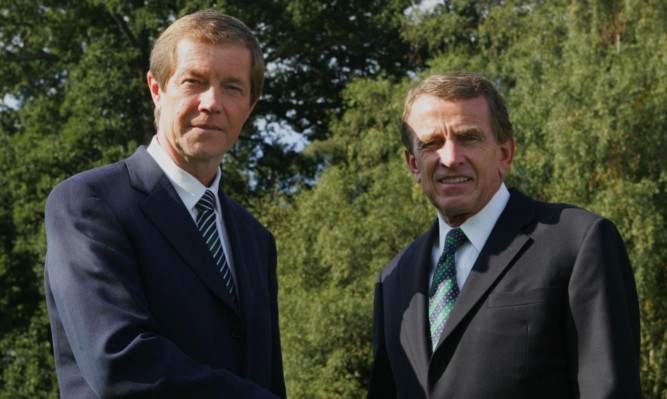George O’Grady’s decade-long stay as chief executive of the European Tour was not without problems, but his rival Tim Finchem hailed his “extraordinary leadership”.
The 65-year-old confirmed he is stepping down from the head of the Tour once a successor is secured but Finchem, his opposite number as commissioner of the PGA Tour in the USA, has no doubts about his legacy.
“George’s true measure as a leader is reflected in the fact that he leaves the European Tour in a vastly better position than when he began his tenure,” said Finchem, describing his as a “valued friend”.
O’Grady, who was Ken Schofield’s deputy for many years before taking up the chief post in 2004, said now, specifically after another hugely successful Ryder Cup, was the right time to go.
“In the aftermath of what I believe to have been the best presented Ryder Cup since my first involvement in the contest at Royal Lytham in 1977, I felt this was the right time to ask the board to begin the search for my successor.
“It is my firm belief that, coming towards the end of what has been another incredibly successful season, we are now seeing the green shoots of recovery across Europe and I am pleased that this coincides with all our building blocks, in terms of key television and sponsorship contracts, being in place.”
Speaking about O’Grady’s 40-year contribution to the Tour, chairman David Williams said: “On behalf of the board and all of the members of the European Tour I would like to thank George for his contribution to the European Tour and professional golf generally.
“The European Tour and its players are admired throughout the world of golf and George has played a key part in building global relationships and developing the Tour.
“He has always respected the traditions of the tour and built on the strong foundations put in place by John Jacobs, Neil Coles and Ken Schofield.
“The Tour is now embarking on a new phase in its development and that is why George has considered that it is the right time to ask the nominations committee to find his successor.”
Despite the effects of the economic downturn decimating the Tour’s presence in Spain and the withdrawal of major sponsors like Volvo, O’Grady has plotted a course through the problems by increasing the international scope of the tour’s operations.
The high water mark of his tenure as chief executive can be narrowed to a single day October 6 2008.
On that day it seemed as if the dream of matching the PGA Tour stride for stride and dollar for dollar was about to be fulfilled.
It was the lavish launch of the Race to Dubai at Turnberry, the deal by which George seemed to have secured a lucrative future for the Tour.
The money from Dubai, seemingly limitless, would make the European Tour a true rival to the PGA Tour, which was starting to struggle for sponsors. It seemed George’s greater international vision might trump Finchem.
Eventually, of course, the Dubai money turned out to be less than advertised.
The economic collapse affected the sheikhs as much as anyone else, and although the Race to Dubai still exists, it’s on a more modest scale and certainly not the end to the Tour’s financial worries as it was initially billed.
Meanwhile, the bottomless pockets of the US TV networks ensure the riches in the States are simply unmatchable.
You could never blame George for having a go, however.
He was always hamstrung by comparisons to the US he could never match, unlike his predecessor Schofield who would always have the credit for there simply being a European Tour in existence at all.
O’Grady was a subtle, understated presence. He was certainly good for Scotland, playing a major part in the enhanced status of the Scottish Open.
For most of his time as chief executive, there’s been as many as four Tour events a year in Scotland with usually only one in England.
But it’s interesting to see the Tour publicly talking about a new direction.
Many of the senior executives at Wentworth have been in place for a long time O’Grady himself for four decades.
A fresh perspective, perhaps coming from elsewhere in the global golf industry, would do no harm.
